There’s something inherently fascinating about animals that defy the typical life expectancy we associate with most creatures. While us humans can expect to live around 70 to 80 years, give or take, there are animals out there that live for centuries. These creatures seem to exist in a world where time has a different meaning.
1. The Marvelous Quahog Clam
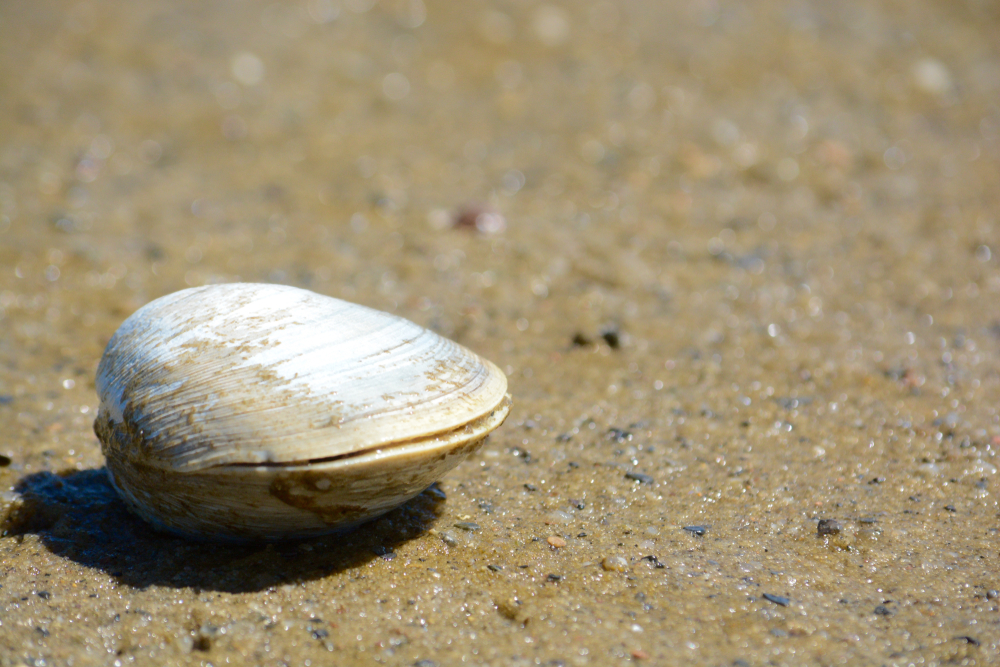
Ming the clam once made headlines when it was discovered by researchers from Bangor University in the UK. This ocean dweller was estimated to be around 507 years old! Imagine the stories Ming could tell about the ocean’s history. The quahog clam, also known as the ocean quahog, spends its life buried in the North Atlantic Ocean’s cold seabed, which might be one of the reasons it can live for so long. According to Scientific American, these clams grow very slowly, which contributes to their longevity. Despite their long lives, the chances of finding another clam as old as Ming are quite rare due to overfishing and environmental changes. It’s a reminder of the wonders of the natural world and the importance of protecting such ancient beings.
These clams have a slow-paced existence, with minimal movement and a life lived mostly under the sand. They filter feed, meaning they sift through water to consume tiny particles, which doesn’t require much energy. Their shells hold the secret to their long life—each layer of the shell marks a year of age, similar to tree rings. Marine biologists have developed techniques to estimate the clam’s age by analyzing these rings. But despite their ancient status, ocean quahogs face threats from ocean acidification and commercial harvesting. Protecting these fascinating creatures is crucial, as they provide insight into marine ecosystems and the history of our oceans.
2. Bowhead Whales: The Leviathans of Longevity
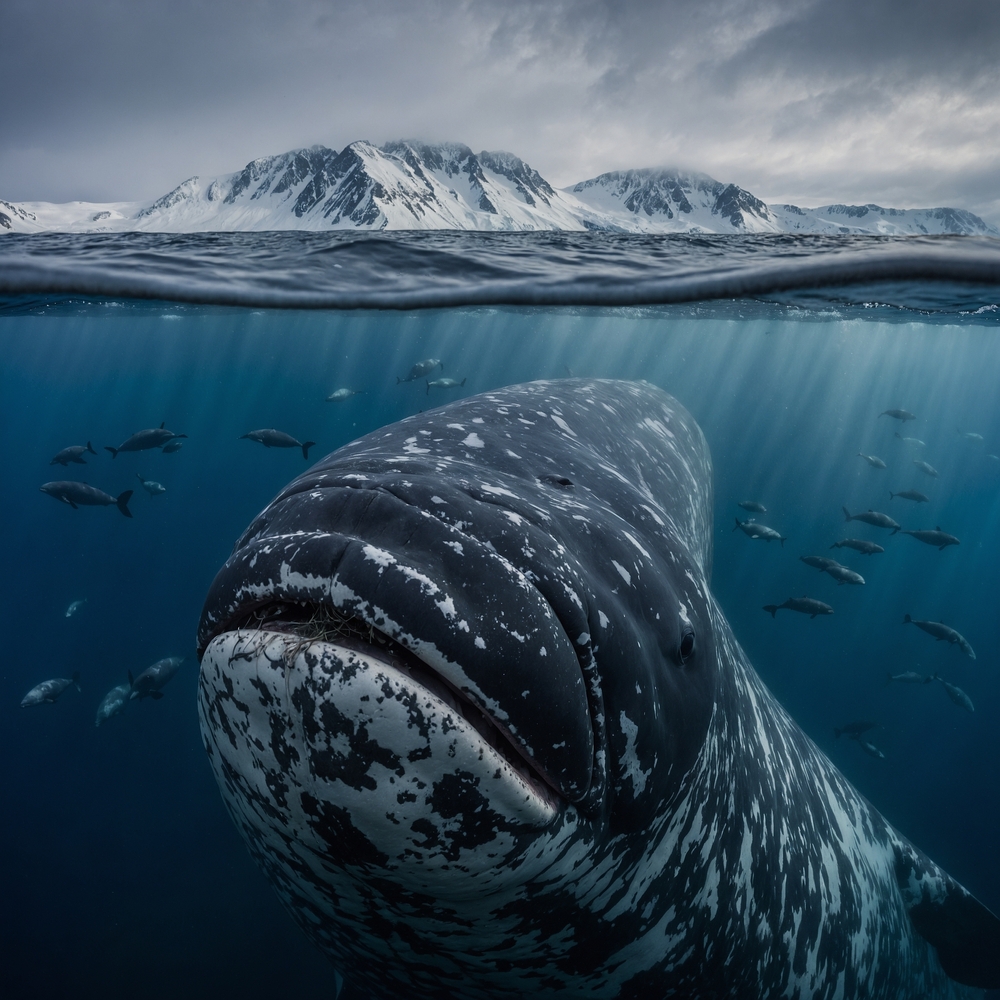
Bowhead whales are not only known for their size and beauty but also their impressive lifespan. These magnificent creatures can live over 200 years, making them one of the longest-lived mammals on earth. Their secret to longevity lies in their cellular structure and genetic makeup, which scientists are still studying. Found in the icy waters of the Arctic and sub-Arctic, bowhead whales have developed adaptations that allow them to thrive in harsh environments. Their blubber, which can be over a foot thick, insulates them from the cold and stores energy. Despite their size, bowheads are gentle giants with a diet mainly consisting of small crustaceans and plankton.
Their long lifespan has made them a subject of intrigue for scientists, who are studying them to understand aging and longevity better. Bowheads have a remarkable ability to heal from injuries and resist aging-related diseases. They are a testament to nature’s ability to create life forms that defy our understanding of age. However, despite their resilience, bowheads face threats from climate change and human activities like shipping and oil exploration. Preserving these majestic creatures is crucial not only for the ecosystem but also for the insights they offer into life extension.
3. Tortoises: Masters of Time
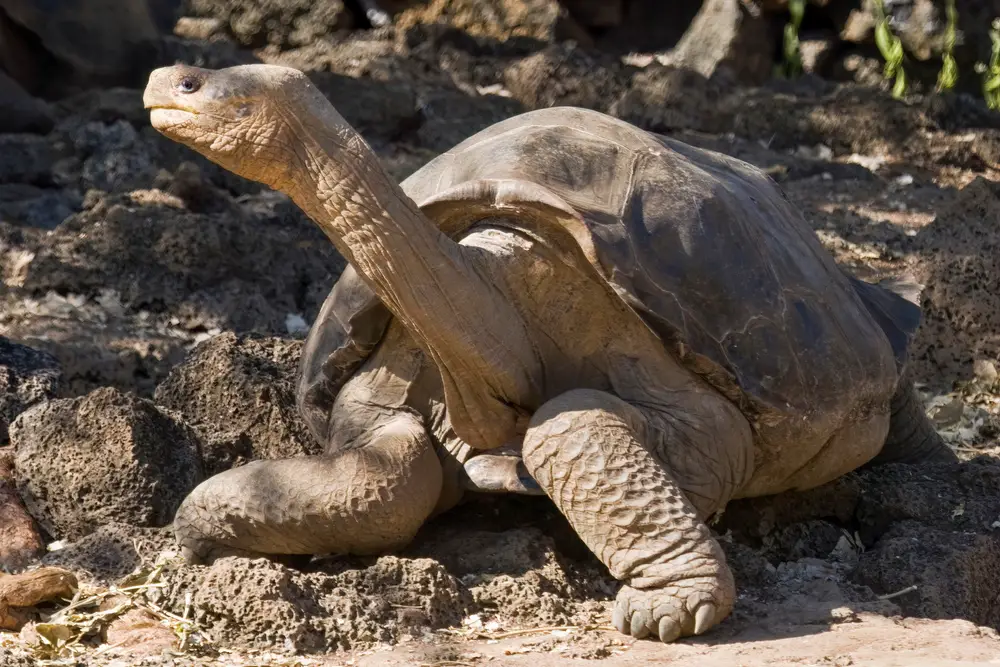
Tortoises are perhaps the most iconic animals when it comes to longevity, with some species living over 150 years. The famous Galápagos tortoises, for example, can live extensively and have become symbols of endurance and resilience. According to National Geographic, these tortoises have slow metabolisms and can survive for long periods without food or water, which contributes to their extended lifespan. Their shell provides protection from predators, allowing them to live a mostly peaceful life. While they move slowly on land, their pace seems perfectly attuned to their environment, where patience is a survival skill.
Tortoises have been known to form bonds with humans, and some, like Harriet, a famous Galápagos tortoise from Australia Zoo, have become beloved figures. Harriet lived to be approximately 175 years old, witnessing over a century of world changes. The secret to their longevity is still being explored, but their slow metabolic rate and minimal stress levels seem to play a part. Unfortunately, human activities, habitat destruction, and illegal pet trade threaten many tortoise species. Conservation efforts are essential to ensure these ancient reptiles continue to roam the earth for generations to come.
4. The Enigmatic Greenland Shark
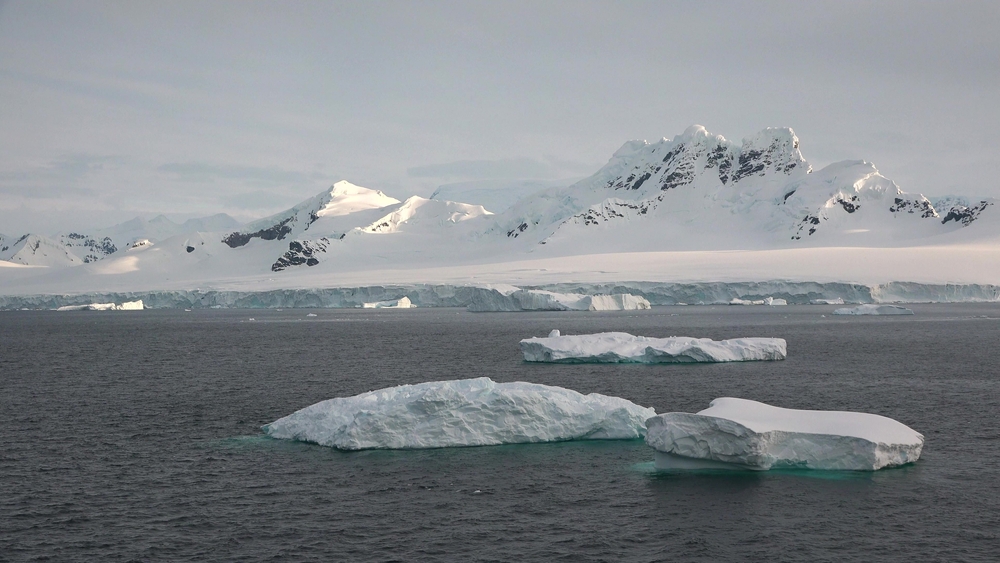
Often swimming in the mysterious depths of the North Atlantic, the Greenland shark is one of the oldest known vertebrate species. These ancient fish can live for over 400 years, making them the Methuselahs of the sea. Their slow metabolism and cold-water habitat contribute to their incredibly long lifespan. Greenland sharks grow at an exceptionally slow rate, often taking over 100 years to reach maturity. Despite their size, these sharks are slow-moving and have a diet consisting of various fish and marine mammals. They are rarely seen, preferring the deep, dark waters of the Arctic and North Atlantic Oceans.
The Greenland shark’s longevity has captured the attention of scientists who are eager to understand the genetic secrets of long life. They have been the subject of research to uncover insights into aging and adaptation to cold environments. However, their longevity also makes them susceptible to environmental changes and pollution. As apex predators, they play a crucial role in maintaining the balance of their marine ecosystem. Efforts to study and protect these enigmatic creatures are vital, as they hold the keys to understanding the mysteries of life beneath the waves.
5. Koi Fish: The Ornamental Elders
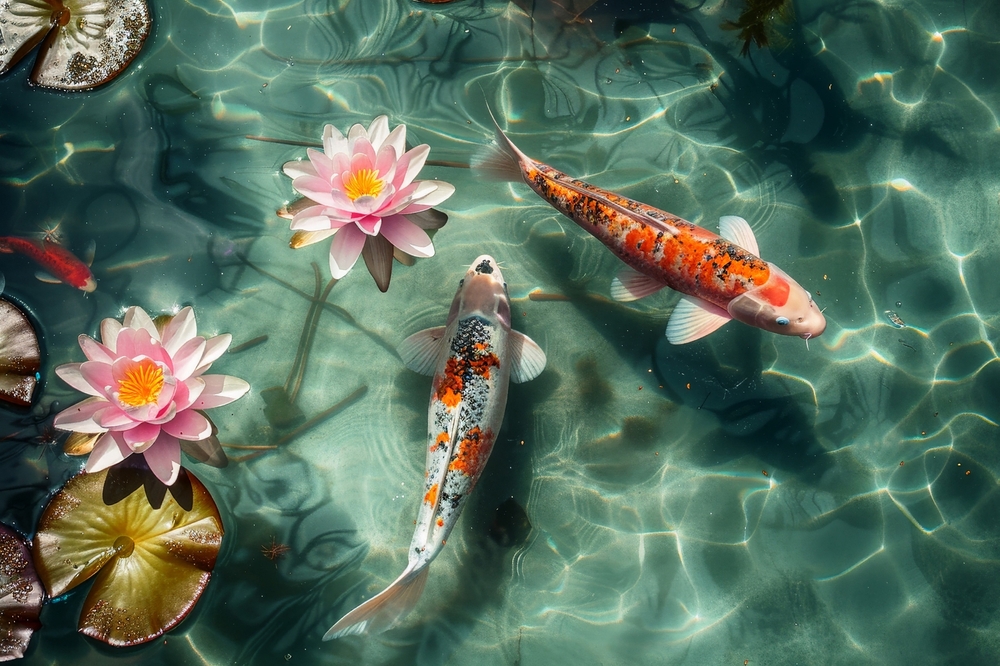
Koi fish, often found in ornamental garden ponds, are not just beautiful but also impressively long-lived. Some koi have been known to live for over 200 years, becoming cherished companions for generations of caretakers. These fish are a symbol of perseverance and endurance, embodying the tranquility of the waters they inhabit. Koi are bred for their color and patterns, with vibrant red, orange, and white hues adorning their scales. Despite their domestication, they retain the hardy nature of their wild ancestors, allowing them to thrive in various climates.
Koi have been part of Japanese culture for centuries, symbolizing luck, prosperity, and good fortune. Their long life is often associated with wisdom and serenity, making them beloved subjects in art and mythology. Proper care, diet, and environment are crucial for their longevity, with many koi enthusiasts dedicating time to maintaining pristine pond conditions. The bond between koi and their keepers can be profound, with some caretakers passing their prized fish down through generations. As cultural icons and living art, koi fish continue to captivate and inspire awe with their beauty and resilience.
6. The Wise and Wandering Aldabra Giant Tortoise
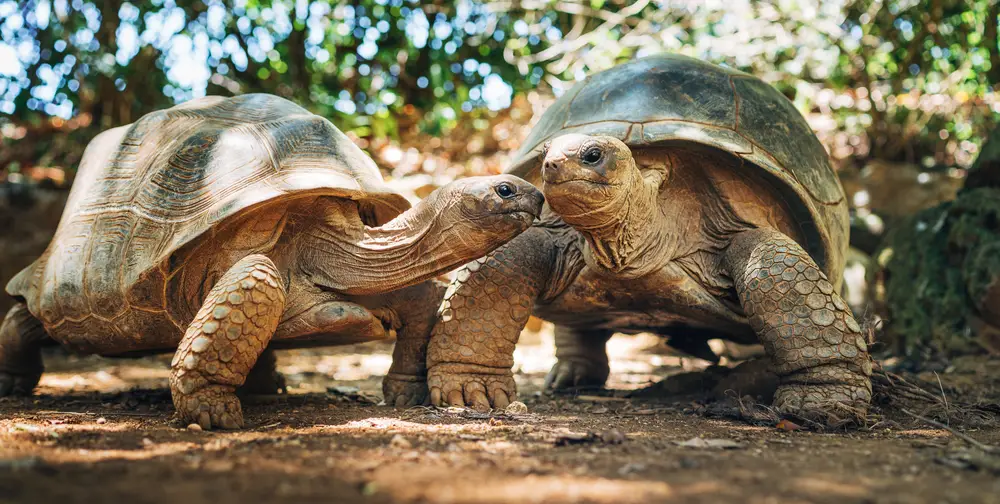
Native to the Aldabra Atoll in the Seychelles, the Aldabra giant tortoise is another marvel of longevity. These tortoises can live well over 150 years, thriving in the isolated paradise of their island home. Their large size and robust build are complemented by a slow metabolism, which contributes to their extended lifespan. Aldabra giant tortoises are known for their gentle nature and can be seen grazing on grasses and shrubs. They play a significant role in their ecosystem, influencing the vegetation and aiding in seed dispersal as they wander the island.
In captivity, these tortoises have been known to form bonds with humans, displaying curiosity and intelligence. Their calm demeanor and enduring presence have made them popular in zoos and conservation programs. Despite their resilience, Aldabra giant tortoises face threats from habitat loss and introduced predators. Conservation efforts are crucial to ensure these ancient reptiles continue to wander their island home. They are living reminders of the slow, methodical pace of nature, offering lessons in patience and longevity.
7. Tuatara: The Living Fossil
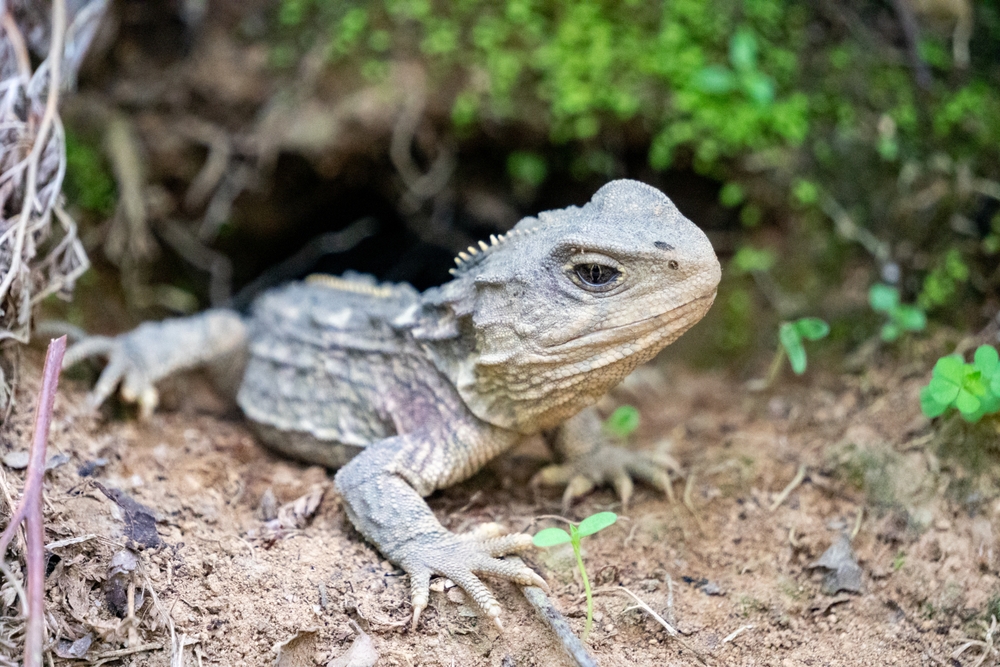
Tuataras are remarkable reptiles that have fascinated scientists with their ancestral lineage and impressive lifespan. Often referred to as “living fossils,” tuataras have existed relatively unchanged for over 200 million years. These cold-blooded creatures can live for more than a century, residing primarily in New Zealand. Their secret to longevity lies in their slow metabolism and unique physiology, which includes a third “parietal” eye on top of their head. Tuataras have a slow growth rate, with some not reaching sexual maturity until 10 to 20 years old.
They are nocturnal and prefer cool environments, living in burrows they often share with seabirds. Their diet consists of insects, worms, and small vertebrates, which they hunt with precision. Tuataras have adapted well to their environments, but face threats from habitat destruction and introduced predators like rats. Conservation efforts in New Zealand are focused on preserving their natural habitats and ensuring their survival. As one of the last remaining members of an ancient order, tuataras offer valuable insights into evolutionary history and the art of surviving through the ages.
8. The Immortal Hydra
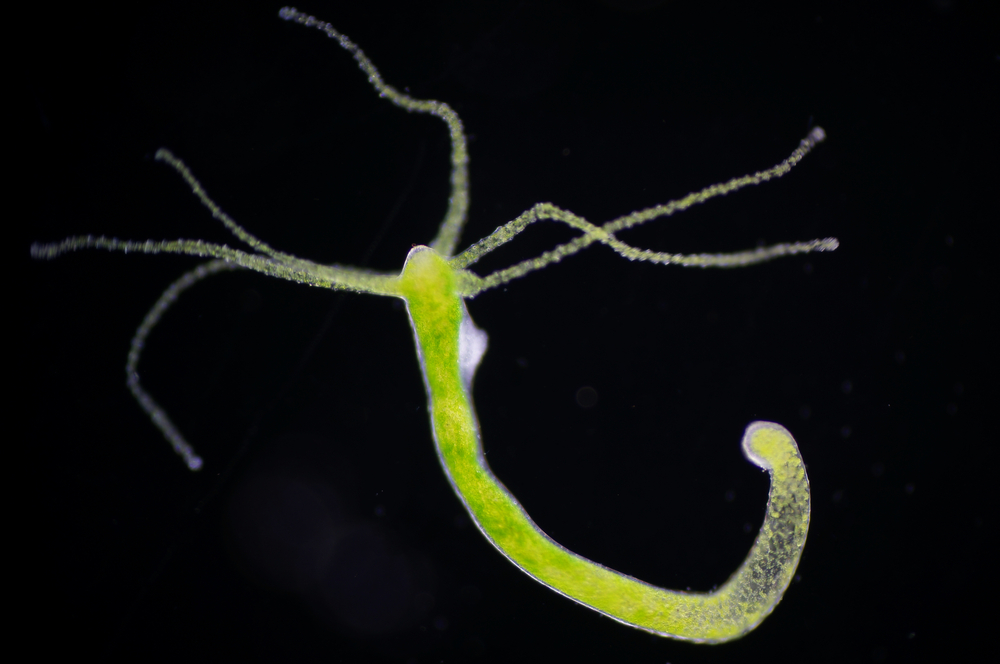
Hydra, tiny freshwater organisms, are astonishing examples of potential immortality in the animal kingdom. Unlike most creatures, hydras have the unique ability to constantly regenerate their cells, effectively avoiding aging. This regenerative power enables them to replace any damaged or old tissue with new cells. Found in unpolluted freshwater environments, hydras have simple tubular bodies with tentacles used for capturing prey. Their diet consists mainly of small aquatic invertebrates, which they paralyze with specialized stinging cells.
What makes hydra truly fascinating is their ability to reproduce both sexually and asexually, allowing for rapid population growth under favorable conditions. Scientists are intrigued by hydras because their regenerative capabilities offer insights into cellular biology and aging. Studies are ongoing to explore how these creatures defy the typical constraints of time and mortality. While hydras inhabit a delicate ecological balance, understanding their biology could unlock secrets to combating age-related diseases in humans.
9. The Not-So-Average Red Sea Urchin
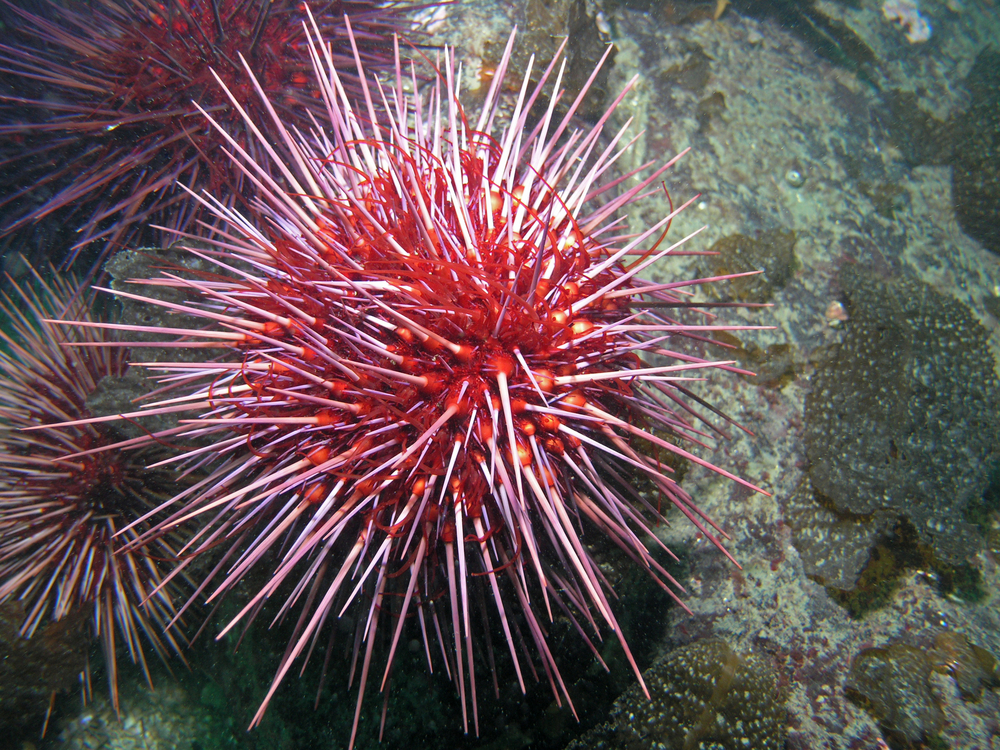
Red sea urchins inhabit the cold, rocky coastal waters of the Pacific Ocean, particularly around North America. These spiny creatures are much more than meets the eye, with some individuals living up to 200 years. Their longevity is attributed to their slow growth rates and ability to thrive in nutrient-rich environments. Red sea urchins play a vital ecological role, grazing on algae and keeping the marine ecosystem in balance. Despite their prickly appearance, they are crucial for the health of kelp forests and other underwater habitats.
These urchins are fascinating subjects for scientists studying aging and longevity. Their ability to maintain cellular function over long periods without significant signs of aging is an area of keen interest. However, red sea urchins face threats from overfishing and environmental changes, leading to a decline in some populations. Conservation efforts are necessary to ensure their survival and the continued health of their ecosystems. As humble guardians of the ocean floor, red sea urchins remind us of the complex interplay between life, time, and the environment.
10. The Unassuming Rougheye Rockfish
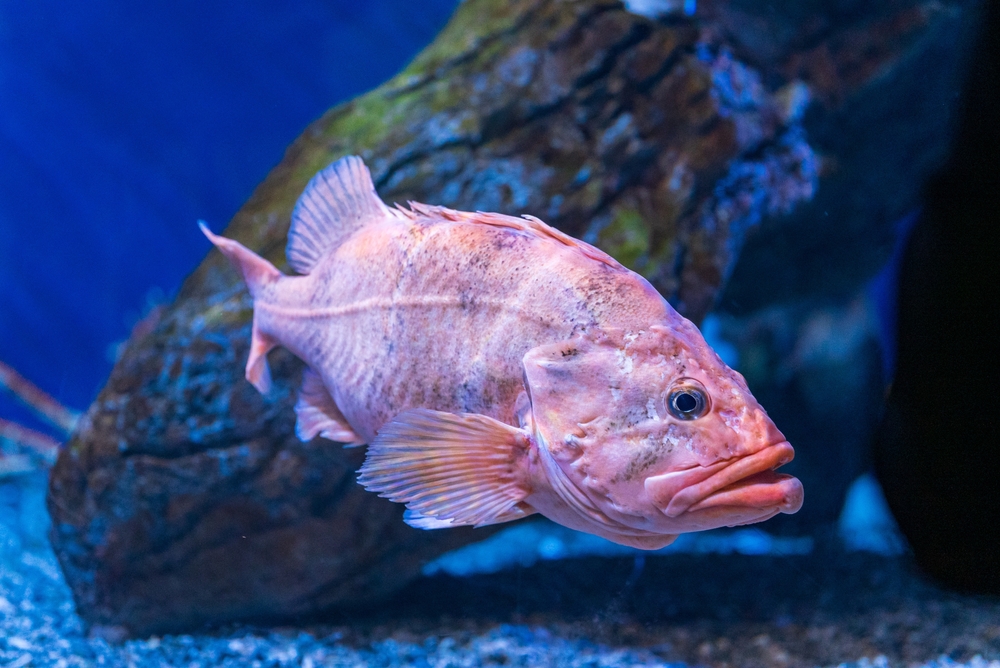
Rougheye rockfish, found in the deep waters of the Pacific Ocean, are known for their impressive lifespan, reaching up to 205 years. These long-lived fish are characterized by their striking reddish-brown coloration and spiny heads. They inhabit rocky reefs and continental shelf edges, where they feed on shrimp, crabs, and smaller fish. The slow growth rate and late maturity of rougheye rockfish contribute to their extended lifespan. Their longevity has made them a subject of scientific research, focusing on understanding fish aging and the environmental factors influencing survival.
Rougheye rockfish are well adapted to their deep-sea environments, with specialized features for pressure regulation and buoyancy. Despite their resilience, they are vulnerable to overfishing and habitat destruction, impacting their population numbers. Conservation measures, such as fishing regulations and protected marine areas, are essential to preserve these ancient fish. Understanding the biology and ecology of rougheye rockfish can aid in the development of sustainable management practices. These deep-sea dwellers offer a window into the mysteries of ocean life and the secrets of longevity under the waves.
11. The Timeless Turritopsis Dohrnii Jellyfish
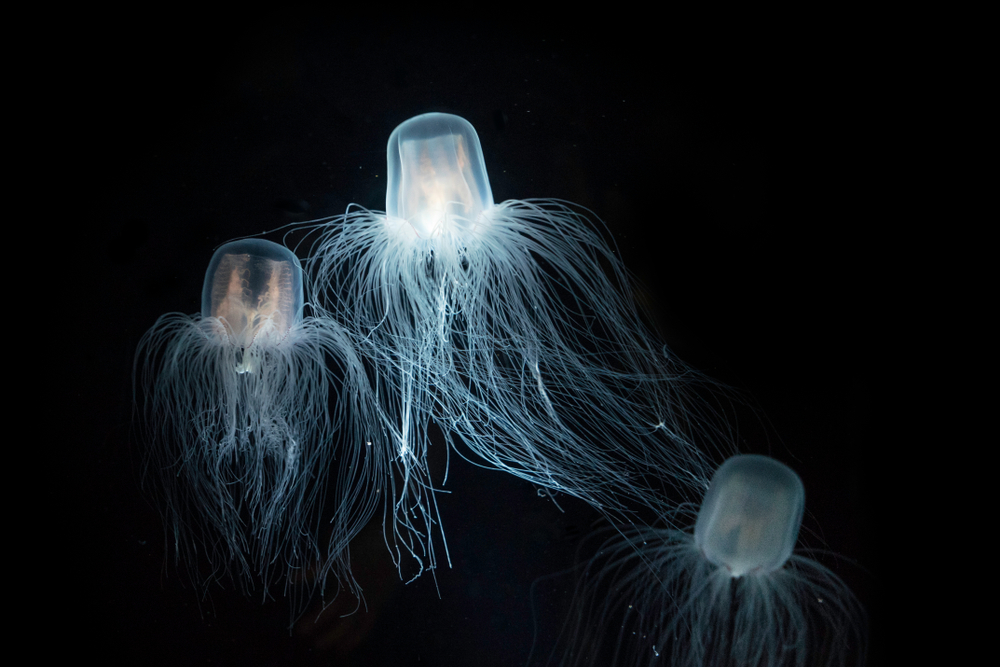
The turritopsis dohrnii, often dubbed the “immortal jellyfish,” has captured imaginations with its ability to seemingly cheat death. This small, transparent jellyfish is capable of reverting to its juvenile form after reaching maturity, effectively resetting its life cycle. Found in oceans worldwide, this jellyfish undergoes a process called transdifferentiation, where its cells can transform into different types. This remarkable ability allows it to bypass the typical aging process, making it biologically immortal under ideal conditions.
While turritopsis dohrnii can potentially live indefinitely, it still faces threats from disease, predation, and environmental changes. Scientists are studying this jellyfish to uncover the mechanisms behind its unique regenerative abilities, hoping to apply these findings to understanding human aging and cell regeneration. Despite its potential immortality, the jellyfish remains a delicate member of marine ecosystems, relying on specific conditions to thrive. The turritopsis dohrnii serves as a reminder of nature’s extraordinary capabilities and the potential for life to transcend the boundaries of time.
12. The Ancient Freshwater Pearl Mussel
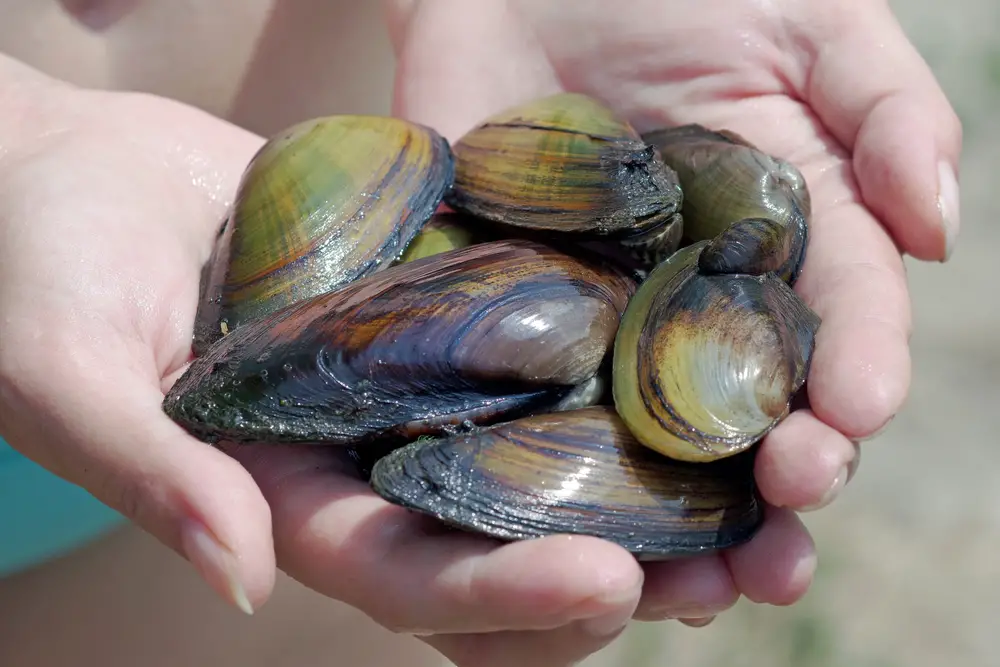
Freshwater pearl mussels are not only known for producing pearls but also for their incredible lifespan, living up to 200 years. These bivalves inhabit cold, fast-flowing rivers and streams, where they play a vital role in filtering water and maintaining ecosystem health. Their longevity is linked to their slow metabolism and ability to withstand harsh environmental conditions. Freshwater pearl mussels have a complex lifecycle, involving a larval stage that attaches to the gills of fish for development.
These mussels are crucial indicators of environmental quality, as they are highly sensitive to pollution and habitat changes. Unfortunately, they face significant threats from habitat degradation, pollution, and illegal pearl harvesting, leading to declining populations in many areas. Conservation efforts focus on habitat restoration and legal protection to ensure their survival. Freshwater pearl mussels remind us of the intricate balance within aquatic ecosystems and the importance of preserving biodiversity for future generations.
13. The Long-Lived Orange Roughy
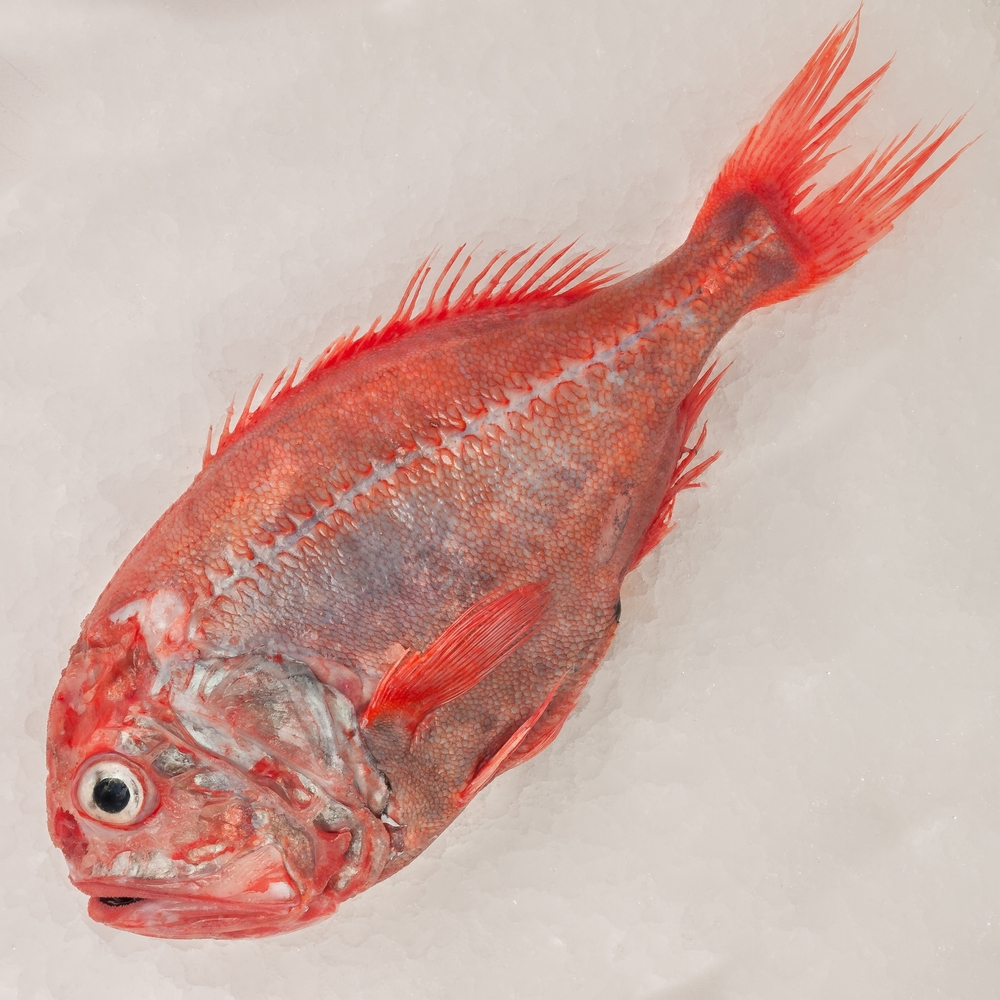
Orange roughy, a deep-sea fish found in the Atlantic and Pacific Oceans, is known for its longevity, living beyond 150 years. These fish are slow-growing and late to mature, inhabiting depths of up to 1,800 meters. Their longevity is partly due to their low metabolic rate and ability to thrive in cold, nutrient-poor waters. Orange roughy are characterized by their bright orange color and large heads, with a diet primarily consisting of shrimp and small fish.
Despite their resilience, orange roughy populations have been severely impacted by overfishing, particularly in the late 20th century. Their slow reproduction rate makes it challenging for populations to recover quickly from exploitation. Conservation measures, including fishing quotas and protected areas, are essential to preserve these ancient fish. The story of the orange roughy highlights the need for sustainable practices to ensure the health of ocean ecosystems and the survival of long-lived species.
